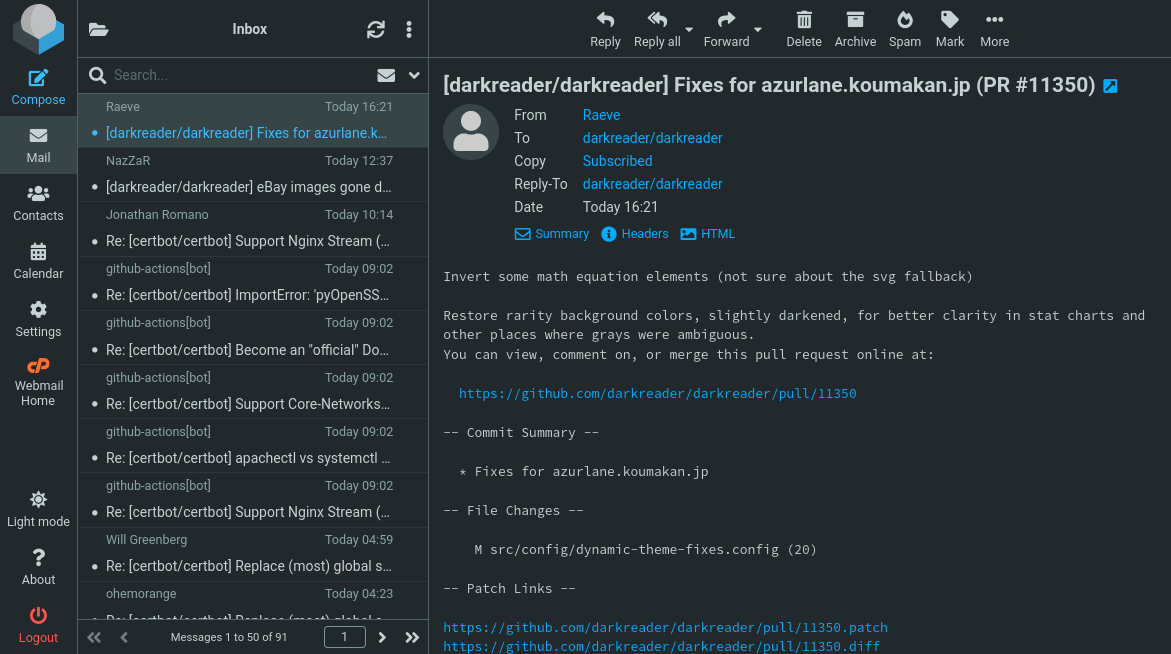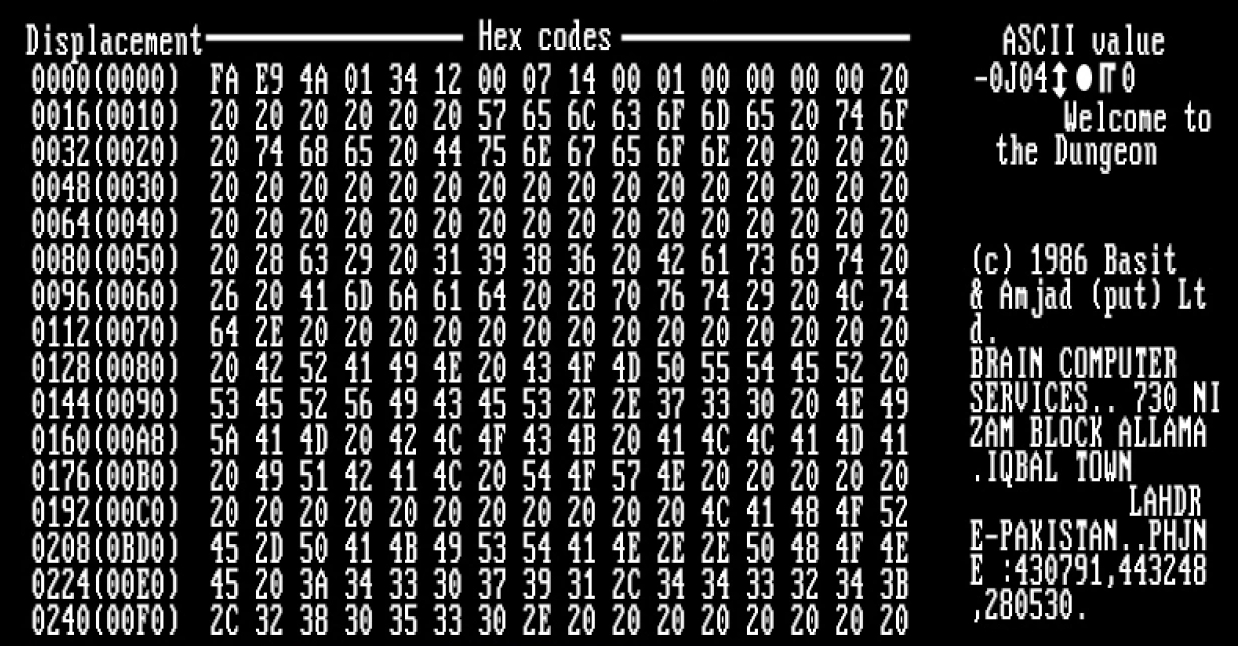|
Gmane
Gmane (pronounced "mane") is an e-mail to news gateway. It allows users to access electronic mailing lists as if they were Usenet newsgroups, and also through a variety of web interfaces. Since Gmane is a bidirectional gateway, it can also be used to post on the mailing lists. Gmane is an archive; it never expires messages (unless explicitly requested by users). Gmane also supports importing list postings made prior to a list's inclusion on the service. The project was initiated in 2001 by Lars Magne Ingebrigtsen, one of the authors of Gnus, a newsreader for Emacs. It began operating publicly on 11 February 2002 after a one-month test period. , Gmane's homepage stated that it included 129,592,482 messages in its archives, from a total of 20,070 mailing lists. In July 2016, Ingebrigtsen announced that he was considering shutting Gmane down, and the web interface was taken offline. In August 2016 Gmane was acquired by Yomura Holdings. Only the message spool was transferred, ... [...More Info...] [...Related Items...] OR: [Wikipedia] [Google] [Baidu] |
Electronic Mailing Lists
A mailing list is a collection of names and addresses used by an individual or an organization to send material to multiple recipients. Mailing lists are often rented or sold. If rented, the renter agrees to use the mailing list only at contractually agreed-upon times. The mailing list owner typically enforces this by " salting" (known as "seeding" in direct mail) the mailing list with fake addresses and creating new salts for each time the list is rented. Unscrupulous renters may attempt to bypass salts by renting several lists and merging them to find common, valid addresses. Mailing list brokers exist to help organizations rent their lists. For some list owners, such as specialized niche publications or charitable groups, their lists may be some of their most valuable assets, and mailing list brokers help them maximize the value of their lists. Transmission may be paper-based or electronic. Each has its strengths, although a 2022 article claimed that compared to email, "dir ... [...More Info...] [...Related Items...] OR: [Wikipedia] [Google] [Baidu] |
Gnus
Gnus (), or Gnus Network User Services, is a message reader which is part of GNU Emacs. It supports reading and composing both e-mail and news and can also act as an RSS reader, web processor, and directory browser for both local and remote filesystems. Gnus blurs the distinction between news and e-mail, treating them both as "articles" that come from different sources. News articles are kept separate by group, and e-mail can be split into arbitrary groups, similar to folders in other mail readers. In addition, Gnus is able to use a number of web-based sources as inputs for its groups. Features Some Gnus features: * a range of backends that support any or all of: ** reading email from the local filesystem, or over a network via IMAP or POP3 ** reading web pages via an RSS feed ** treating a directory of files, either local or remote (via FTP or other method) as articles to browse ** reading Usenet News, including the Gmane and Gwene mail-to-news archives of mailing lists ** s ... [...More Info...] [...Related Items...] OR: [Wikipedia] [Google] [Baidu] |
SpamAssassin
Apache SpamAssassin is a computer program used for e-mail spam filtering. It uses a variety of spam-detection techniques, including DNS and fuzzy checksum techniques, Bayesian filtering, external programs, blacklists and online databases. It is released under the Apache License 2.0 and is a part of the Apache Foundation since 2004. The program can be integrated with the mail server to automatically filter all mail for a site. It can also be run by individual users on their own mailbox and integrates with several mail programs. Apache SpamAssassin is highly configurable; if used as a system-wide filter it can still be configured to support per-user preferences. History Apache SpamAssassin was created by Justin Mason, who had maintained a number of patches against an earlier program named ''filter.plx'' by Mark Jeftovic, which in turn was begun in August 1997. Mason rewrote all of Jeftovic's code from scratch and uploaded the resulting codebase to SourceForge on April 20, ... [...More Info...] [...Related Items...] OR: [Wikipedia] [Google] [Baidu] |
Webmail
Webmail (or web-based email) is an email service that can be accessed using a standard web browser. It contrasts with email service accessible through a specialised email client software. Additionally, many internet service providers (ISP) provide webmail as part of their internet service package. Similarly, some web hosting providers also provide webmail as a part of their hosting package. As with any web application, webmail's main advantage over the use of a desktop email client is the ability to send and receive email anywhere from a web browser. History Early implementations The first Web Mail implementation was developed at CERN in 1993 by Phillip Hallam-Baker as a test of the HTTP protocol stack, but was not developed further. In the next two years, however, several people produced working webmail applications. In Europe, there were three implementations, Søren Vejrum's "WWW Mail", Luca Manunza's "WebMail", and Remy Wetzels' "WebMail". Søren Vejrum's "WWW Mai ... [...More Info...] [...Related Items...] OR: [Wikipedia] [Google] [Baidu] |
Google Groups
Google Groups is a service from Google that provides discussion groups for people sharing common interests. Until February 2024, the Groups service also provided a gateway to Usenet newsgroups, both reading and posting to them, via a shared user interface. In addition to accessing Google Groups, registered users can also set up mailing list archives for e-mail lists that are hosted elsewhere. Google Groups became operational in February 2001, following Google's acquisition of Deja's Usenet archive. Deja News had been operational since March 1995. Google Groups allows any user to freely conduct and access threaded discussions, via either a web interface or e-mail. There are at least two kinds of discussion groups: forums specific to Google Groups (like mailing lists) and Usenet groups, accessible by NNTP, for which Google Groups acts as gateway and unofficial archive. The Google Groups archive of Usenet newsgroup postings dates back to 1981. On December 15, 2023, Google annou ... [...More Info...] [...Related Items...] OR: [Wikipedia] [Google] [Baidu] |
TMDA
Tagged Message Delivery Agent (TMDA) is an open-source software application designed to reduce the amount of junk email a user receives. TMDA's main difference from other anti-spam systems is the use of a challenge/response system that bulk mailing machines and programs are either unwilling (to save bandwidth) or unable (due to lack of programming) to answer. The technical countermeasures used by TMDA to thwart spam include: * Whitelists: Whitelists are essentially an ‘accept list’. All messages from addresses in these lists are automatically allowed through no matter what the content is. * Blacklists: Blacklists are a ‘block list’. All messages from addresses in these lists are automatically blocked. * Challenge/response (C/R): A controversial system in which challenge emails are sent to unfamiliar sending addresses in an attempt to validate those addresses and their associated emails. Legitimate senders who are not yet approved are thus tasked with an additional “re ... [...More Info...] [...Related Items...] OR: [Wikipedia] [Google] [Baidu] |
Computer Virus
A computer virus is a type of malware that, when executed, replicates itself by modifying other computer programs and Code injection, inserting its own Computer language, code into those programs. If this replication succeeds, the affected areas are then said to be "infected" with a computer virus, a metaphor derived from biological viruses. Computer viruses generally require a Computer program, host program. The virus writes its own code into the host program. When the program runs, the written virus program is executed first, causing infection and damage. By contrast, a computer worm does not need a host program, as it is an independent program or code chunk. Therefore, it is not restricted by the Computer program, host program, but can run independently and actively carry out attacks. Virus writers use social engineering (security), social engineering deceptions and exploit detailed knowledge of vulnerability (computing), security vulnerabilities to initially infect systems an ... [...More Info...] [...Related Items...] OR: [Wikipedia] [Google] [Baidu] |
Spam (e-mail)
Email spam, also referred to as junk email, spam mail, or simply spam, refers to unsolicited messages sent in bulk via email. The term originates from a Monty Python sketch, where the name of a canned meat product, "Spam," is used repetitively, mirroring the intrusive nature of unwanted emails. Since the early 1990s, spam has grown significantly, with estimates suggesting that by 2014, it comprised around 90% of all global email traffic. Spam is primarily a financial burden for the recipient, who may be required to manage, filter, or delete these unwanted messages. Since the expense of spam is mostly borne by the recipient, it is effectively a form of "postage due" advertising, where the recipient bears the cost of unsolicited messages. This cost imposed on recipients, without compensation from the sender, makes spam an example of a "negative externality" (a side effect of an activity that affects others who are not involved in the decision). The legal definition and status of sp ... [...More Info...] [...Related Items...] OR: [Wikipedia] [Google] [Baidu] |
Anti-virus Software
Antivirus software (abbreviated to AV software), also known as anti-malware, is a computer program used to prevent, detect, and remove malware. Antivirus software was originally developed to detect and remove computer viruses, hence the name. However, with the proliferation of other malware, antivirus software started to protect against other computer threats. Some products also include protection from malicious URLs, spam, and phishing. History 1971–1980 period (pre-antivirus days) The first known computer virus appeared in 1971 and was dubbed the " Creeper virus". This computer virus infected Digital Equipment Corporation's ( DEC) PDP-10 mainframe computers running the TENEX operating system.From the first email to the first YouTube video: a de ... [...More Info...] [...Related Items...] OR: [Wikipedia] [Google] [Baidu] |
E-mail
Electronic mail (usually shortened to email; alternatively hyphenated e-mail) is a method of transmitting and receiving Digital media, digital messages using electronics, electronic devices over a computer network. It was conceived in the late–20th century as the digital version of, or counterpart to, mail (hence ''wikt:e-#Etymology 2, e- + mail''). Email is a ubiquitous and very widely used communication medium; in current use, an email address is often treated as a basic and necessary part of many processes in business, commerce, government, education, entertainment, and other spheres of daily life in most countries. Email operates across computer networks, primarily the Internet access, Internet, and also local area networks. Today's email systems are based on a store-and-forward model. Email Server (computing), servers accept, forward, deliver, and store messages. Neither the users nor their computers are required to be online simultaneously; they need to connect, ty ... [...More Info...] [...Related Items...] OR: [Wikipedia] [Google] [Baidu] |
News Server
A news server is a collection of software used to handle Usenet articles. It may also refer to a computer itself which is primarily or solely used for handling Usenet. Access to Usenet is only available through news server providers. Articles and posts End users often use the term "posting" to refer to a single message or file posted to Usenet. For articles containing plain text, this is synonymous with an article. For binary content such as pictures and files, it is often necessary to split the content among multiple articles. Typically through the use of numbered Subject: headers, the multiple-article postings are automatically reassembled into a single unit by the newsreader. Most servers do not distinguish between single and multiple-part postings, dealing only at the level of the individual component articles. Headers and overviews Each news article contains a complete set of header lines, but in common use the term "headers" is also used when referring to the News Over ... [...More Info...] [...Related Items...] OR: [Wikipedia] [Google] [Baidu] |




